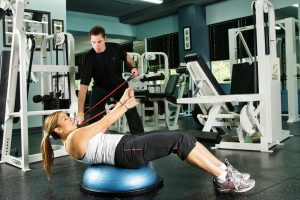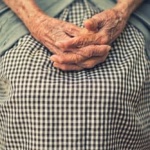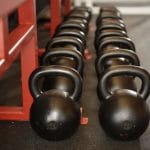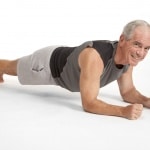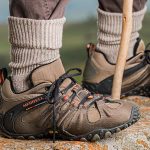 April 2024
April 2024
Rotator Cuff: Where the Sun Doesn’t Shine
The risk of shoulder rotator cuff (RC) pain and injury mounts with age and abuse, or non-use, smoking and, maybe just maybe hypovitaminosis D – that is, chronic low levels of vitamin D. We have covered rotator cuff injury and rehab in these posts – here, here, and here. We’ve discussed vitamin D in various posts and newsletters before like here, here, here and here but never in the context of a singular type of injury. Some studies have shown that low D has significant association with failed RC repair and revision. A study was conducted to determine if low D was, in fact, associated with RC tears independent of age and gender.
Covering a span of 7 years, a surgeons group at Brown University compiled the data on 336,320 patients, out of almost 23 million, who had low D. They compared their risks for RC tears to a control group that did not have low D. They isolated the low D group by extracting data only from those who did not have any accompanying diseases that could impact one’s D status – such as malabsorption, disease, etc. – and had fulfilled a prescription for vitamin D.
The study group consisted of 64.8% females who, generally, are more apt to have RC damage. Of the 1977 RC tears in the low D group, 1096 were women, 881 were men; in the normal D group, of 842 tears, 361 were in men, 481 in females. Furthermore, while men with low D had similar rates of RC tears as those with normal D, women with low D had significantly higher rates – about 37% more – of RC tears than those with normal D.
Also, after RC repair, more patients with low D, especially women, required manipulation under anesthesia (for frozen shoulder) than did those with normal D. Men with or without low D were equally susceptible to frozen shoulder after RC surgery.
In other words, a healthy RC needs to see the sunlight some of the time! Or eat a more D-rich diet.
MSSE Mar. 2024
Does Heavy Resistance Exercise Damage the Pelvic Floor?
Intra-abdominal pressure (IAP) is the beneficial but also potentially damaging result of holding one’s breath while exerting, otherwise known as the Valsalva maneuver. We do this quite naturally during defecation, birthing a child, or sometimes simply when stressed but also when lifting a heavy weight. This causes a temporary elevation in systemic blood pressure (mostly systolic BP) which, if you have a thin-walled blood vessel in the eye or brain, could lead to a bleed, but also puts strain, theoretically, on the muscles of the pelvic floor (PVM). But it also helps stabilize the spine.
We had discussed PVM in the context of core muscles and here but not necessarily in the context of the impact of exercise on them so this study gives a lot of insight on the matter.
A Norwegian study tested the vaginal pressures, strength, and endurance effects during rest and after weightlifting in 47 young women who had not given birth and who were accustomed to resistance training with heavy weights. This was a complex scientific endeavor in that it involved taking measurements while performing 2 exercises (4 x 4 reps at 75%-85% of their individual maximal abilities) where IAP invariably rises – the squat and the deadlift, all while having a “high-precision pressure transducer connected to a vaginal balloon catheter” inserted into the vagina.
The good news is that heavy weightlifting does not put excessive strain on the PVM any more than does resting in a seated position (as the control group had done.)
Nor does it detract from PVM strength or endurance, suggesting that using the loads they had these women lifted “may be considered tolerable and below the intensity level to cause PFM fatigue in nulliparous, young, and strength-trained women.”
In conclusion, “heavy weightlifting at 75%–85% of 1RM has limited effects on levels of fatigue and muscle tone in strength-trained women.”
MSSE Jan. 2024
Tid Bits
A recent study followed the growth and quality of the quadriceps (of the anterior knee) during the first 3 months after a knee replacement. They found that, as expected, there were substantial declines in muscle size and quality at 1 month but that, by 3 months, there was significant hypertrophy. However, muscle quality had not yet started rebounding; the growth was due to greater amounts of non-contractile tissues – fatty infiltration. Thus, rehab must go beyond 3 months. MSSE Dec. 2023
Diabetes is a disease of blood sugar (BS) control. When BS is out of control, negative health events can occur. There are 2 basic types: Type 1 – when the pancreas is unable to put out enough insulin to clear sugar from the blood and move it into the organs and muscles; Type 2 – when our body develops resistance to insulin (called insulin resistance) and can’t manage BS (glucose intolerance.) A new type – Type 3 – refers to “persistent insulin resistance in the brain cells to the point that it interferes with cognitive function”. It is this type that is now associated with the onset of dementia! Environmental Nutrition Apr. 2024
Finally some good news for men: testosterone replacement therapy (TRT) may not be as dangerous for older men at risk for prostate cancer as once believed. Researchers divided 5,246 men with hypogonadism – low-T – and low risk of prostate cancer into 2 groups: one got TRT topical gel while the others used a placebo gel for 14 months. (JAMA Network Open, Dec. 2023) Both groups were tested at regular intervals for changes in their prostates suggestive of risk for cancer. During the first year, the TRT group saw PSA (a blood marker indicative of rising risk) go up but not by much and not beyond that first year. Too, they reported few symptoms of an enlarged prostate giving the researchers reason to suggest that men with low-T might be able to use TRT safely, at least for a few years. Harvard Men’s Health Watch Apr. 2024


